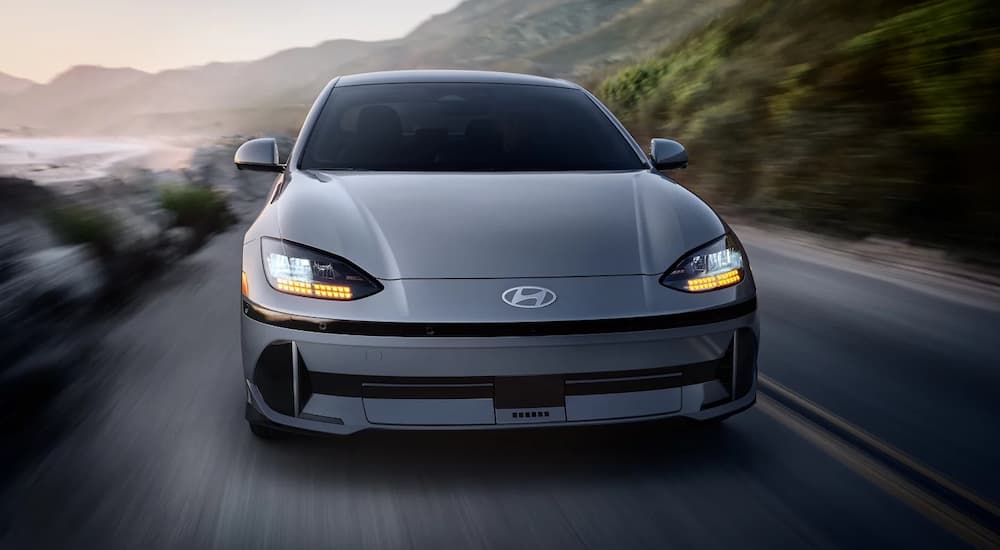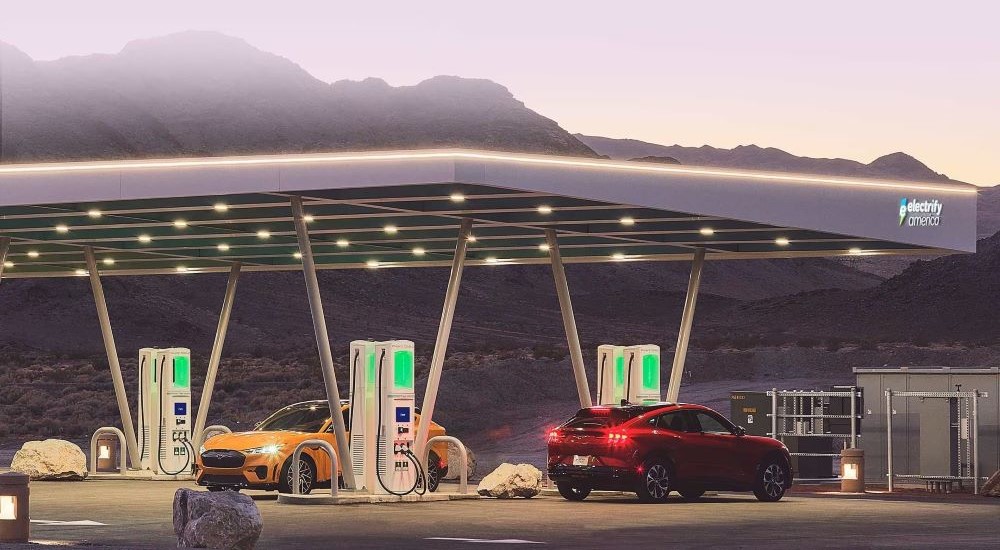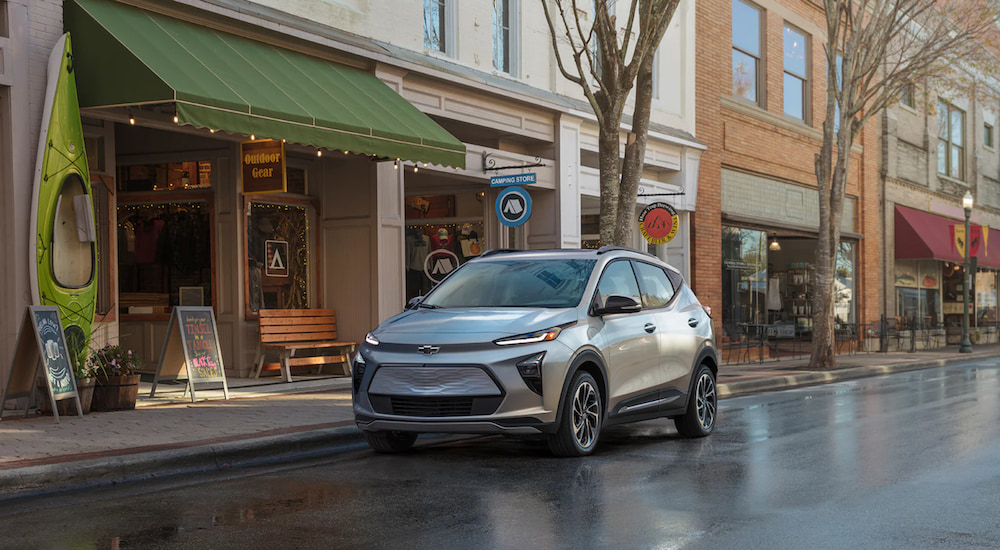
Look around your local dealership, grocery store parking lot, or highway on-ramp, and you’ll start to notice something: there are many electric cars for sale these days. Since bursting onto the scene a couple of decades ago, electric vehicles (EVs) have been steadily gobbling up the market share. The growth has been especially remarkable as of late, with EV sales more than tripling in the last few years.
All-electric cars represented just four percent of the market in 2020, but in just a few short years, that number has ballooned to an astounding 14 percent. So, what’s behind this rapid expansion? There are a couple of reasons that EVs have been doing so well in recent years, from lower prices and generous state and federal tax credits to a growing infrastructure of charging stations that make EVs a more practical option than ever before.
While the rise of the EVs continues its steady upward trend, some drivers might feel a little left behind. Built around an entirely different design than your traditional gas-powered car, truck, or SUV, EVs are not your grandfather’s automobile (unless your grandfather was American inventor William Morrison, who invented the first practical EV around 1890). The segment can have some drivers feeling a little lost when it comes to basic issues like charging, maintenance, and brand comparison, but luckily, we’re here to help. Let’s tackle a few common questions that pop up around the EV segment, demystifying this new take on the passenger vehicle and setting you on the road to a greener, cleaner future.
How Often Do I Charge My EV?
This is one of the most common questions we encounter when talking with new EV owners, and it’s easy to understand why. When it comes to pretty much any other electronic device we interact with on a daily basis, we tend to think that there’s really no such thing as too much charging. We’re always eager to get those extra few percentage points added to our smartphone battery whenever we spot a convenient USB connection, so why should our EVs be any different? The truth is, they aren’t. When dealing with any device powered by a lithium-ion battery, there is such a thing as charging too often. The difference is that we expect our smartphones to deteriorate or become obsolete after a few years, but the case is a little different when you’re dealing with a $40,000 EV.
Every time you charge a lithium-ion battery, its usable service life becomes just a little shorter. Given current battery technology, this is impossible to avoid, but there are some easy ways to minimize the effects. You would never drive all the way to a gas station to fill 80 percent of your tank with fuel, but when it comes to EVs, charging a vehicle 80 percent is actually the sweet spot.
There are a couple of reasons for this, and while we’ll spare you the electrical engineering lecture, it all comes down to the fact that batteries tend to charge a lot slower, between 80 and 100 percent, than in any other part of the charging cycle. That last 20 percent will require an excessive amount of power, so in most cases, 80 percent should be your stopping point. In addition to saving you money in charging costs, it can also improve the battery’s longevity, as long-term performance tends to suffer when a battery is continually brought up to 100 percent.
That said, keeping a battery below 30 percent can also have some negative effects, so aim for the 30-to-80 percent range just to be safe. It might be tempting to plug your EV in every time you arrive home, but research has shown that semi-nightly charging is actually the best approach for most drivers. If you’ve got a long road trip ahead of you, you might want to charge all the way up to 100 percent for maximum range, but if you’ve just got some around-town chores to take care of the next day, let the charger take a night off.

What Are Some Popular EV Options?
While the EV segment is still fairly new, there are already some clear frontrunners when it comes to popularity. The list includes established automotive players and ambitious start-ups that have quickly become household names, proving how fast the EV market is expanding. Those brands that forecasted the industry’s all-electric future have positioned themselves for success, while some legacy brands have been struggling to play catch-up, so it’s important to leave any preconceived notions about a particular automaker at the door when entering the EV market. Let’s take a closer look at some of the most popular EVs on the market and see which models live up to the hype.
The Tesla Model Y
The numbers don’t lie: the Tesla Model Y has been America’s best-selling EV for a couple of years, with the brand moving some 228,000 units in 2022 alone. The Model Y combines the highlights of Tesla’s Model 3 sedan with the crossover body style that’s become so fashionable to produce a five-seat EV with some 330 miles of EPA-estimated driving range. The Model Y is built around Tesla’s clean, minimalist design aesthetic, which has become the template for many EVs to follow. The Model Y isn’t the most affordable EV on the market when buying new, but its ubiquity brings some real advantages for those shopping on the pre-owned market.
The Ford Mustang Mach-E
The burgeoning EV market has found success in electrifying some of our favorite legacy models, and the Ford Mustang Mach-E is the perfect example. With the Mach-E, Ford took the original pony car and gave it a decidedly 21st-century update, converting it into a compact crossover SUV without compromising the legendary performance that’s made the Mustang such an icon over the decades. With over 40,000 units sold in 2022, drivers certainly seem to appreciate the combination, which places more of an emphasis on style and performance than many of its competitors in the EV market.
The entry-level Select trim has 266 hp and 429 lb-ft of torque to play with, but those looking for the true Mustang experience can opt for the high-performance GT version, which blows away much of the field with 480 hp and 600-plus lb-ft of torque. Boasting a range of 312 miles, the Mach-E is also relatively affordable, with Ford dropping the price to just over $40k.
The Chevy Bolt EUV
For those seeking one of the best deals in today’s EV market, look no further than the Chevy Bolt EUV. A larger version of the popular Bolt EV, the Bolt EUV, throws in a crossover body with improved ride height and cargo space, making it a much more sensible choice for drivers who appreciate an ample interior. It won’t exactly blow you away with 200 hp and a sole front-wheel drive guise, but it more than makes up for it when it comes to pure value. The Bolt EUV is fun to drive, thanks largely to the instant acceleration afforded by its electric motor. The higher Premier trim can even be had with General Motors’s Super Cruise hands-free driving system, which is one of the most advanced autonomous offerings currently on the market.
The Hyundai Ioniq 6
Hyundai has made a significant investment in the EV sector in recent years, with two best-selling models to show for their efforts. The Hyundai Ioniq 6, along with the Ioniq 5 SUV, are two of the industry’s best-selling models, with critics praising the model’s bold, futuristic styling. Earning a class-topping 8.3 rating from U.S. News & World Report, the publication praised the EV’s spacious cabin and long list of standard features, not to mention its 361-mile range, putting many luxury EVs to shame.
The Ioniq 6 even has a few neat, EV-exclusive tricks up its sleeve, like Hyundai’s exclusive Vehicle-to-Load (V2L) system, which allows drivers to charge a wide range of electronics using the vehicle’s 77.4-kWh battery. From smartphones and laptops to camping equipment and even power tools, you’ll never be hurting for a little juice when you’re behind the wheel of the Ioniq 6.

Do EVs Need Maintenance?
It might have four tires, a steering wheel, and a windshield, but when you start to poke around under the hood, it soon becomes clear that an EV is built a little differently from a gas-powered vehicle. The biggest difference would be the lack of a gas-powered engine, which is replaced with between one to four electric motors. This design has some obvious benefits when it comes to overall efficiency, but what about maintenance costs? Are EVs as affordable to maintain as gas-powered vehicles, and how much should a driver expect to spend on maintenance over the life of their EV?
The answer to the first question is an unequivocal yes. A traditional gas engine is one of the most complex components in any vehicle, requiring over 2,000 parts to work in perfect harmony to move you down the road. That’s a whole lot of parts that can wear out, break down, or otherwise fail to perform, which can lead to no end of headaches—and bills—at your local auto shop. The average EV, on the other hand, is powered by an electric motor with as few as 20 moving parts. According to some quick math, that means an EV is about 100 times less likely to encounter some sort of motor-related failure, which can have a huge impact on lifetime ownership, maintenance, and repair costs.
That’s not to say that EVs don’t require any maintenance at all. Just like with a regular car, you’ll still want to take your vehicle in for periodic checkups so that a service technician can examine your tires, brakes, and suspension components, as well as EV-specific components like the power inverter, cabin heater, and battery coolant level. In today’s EVs, the electric motors tend to outlast the vehicles themselves, but if anything is going to need replacement, it’ll be the battery, rated to last between 8 to 12 years; a new battery currently costs anywhere between $8,000 and $10,000, though those prices are expected to fall as EV battery technology continues to evolve.
Regarding lifetime EV maintenance costs, drivers will be looking at around $4,600 on average. That might sound like a good chunk of change, but when you consider that a gas-powered vehicle can cost twice as much with a lifetime ownership cost of $9,200, it’s hard to argue against the value of an EV. That doesn’t even factor in fuel costs, widening the value gap even further. The typical driver will sink around $1,300 per year into the fuel tank, whereas an EV driver might only rack up $550 a year in charging costs. Again, that makes EVs twice as efficient as gas-powered vehicles, which makes them a hard choice to pass up when you’re looking to save a little dough.
An Investment In An Electric Vehicle Is An Investment In The Future
Between their efficiency, low ownership costs, and increasing practicality, it’s hard to make a case against EVs. The segment might have started slow, with models prioritizing efficiency above all else, but as EVs continue to evolve, performance is becoming more and more of a factor. Just take the Mustang Mach-E, for example. When an early EV adopter got behind the wheel of their 70-horsepower Toyota Prius in 2001, they probably couldn’t have imagined a day when hybrid and electric vehicles would produce 480 hp, but here we are.
Brands like Tesla and Hyundai have been trailblazers in the upper end of the EV segment, injecting a little style and luxury into a market that was so long defined by its boxy, aerodynamic designs. Making the jump to the EV segment might seem like a steep learning curve for some drivers, but once you learn the basics of charging, battery health, and maintenance, the benefits definitely outweigh the small number of drawbacks. As EV infrastructure continues to grow and batteries become more affordable, it’s tough to see how any other vehicle can hope to compete with the pure value of an EV.




